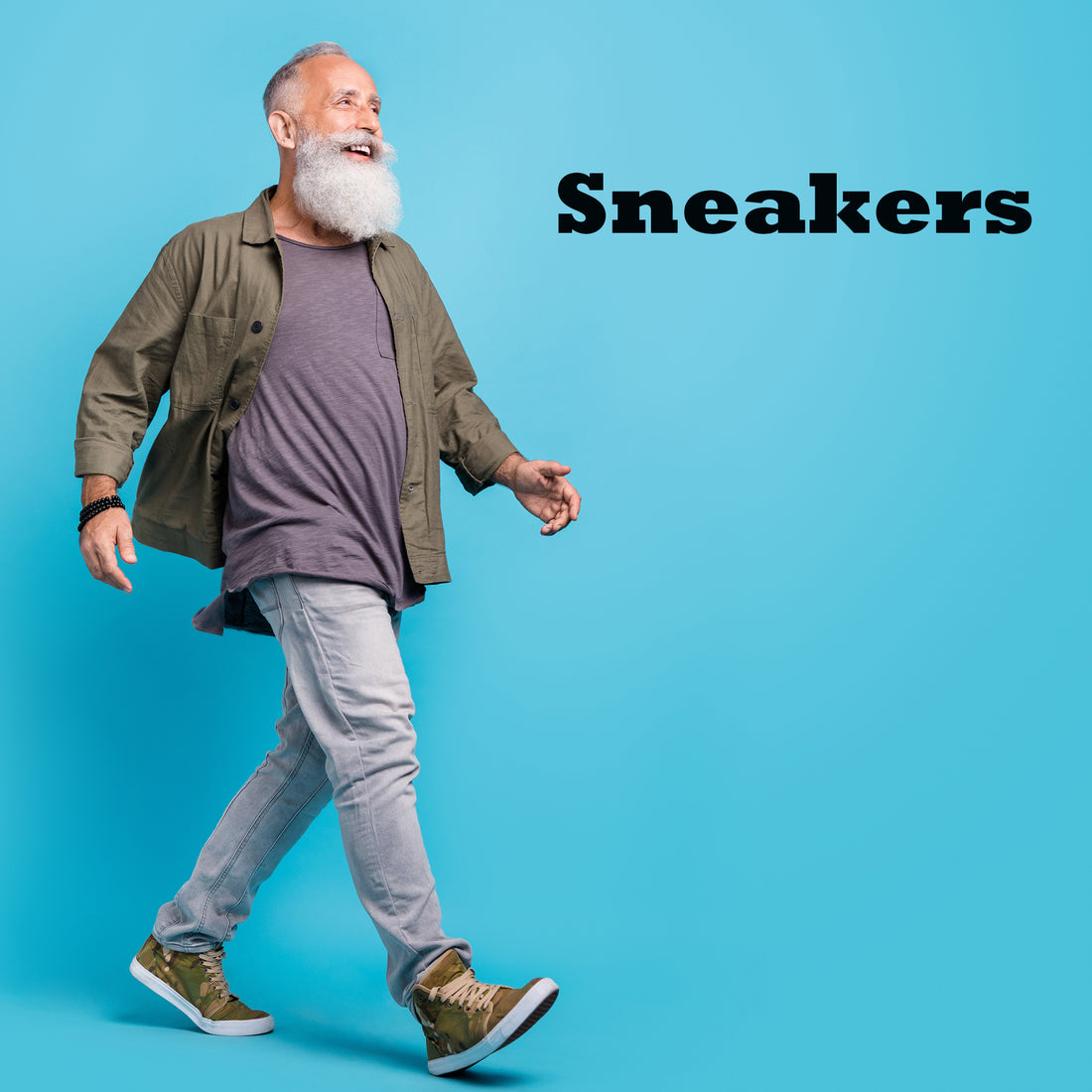
More Sneakers
I belong to an age-group that can expect to live longer by walking more. That’s not just my opinion, but that of a lot of doctors; some of whom don’t work for a shoe company. Can it really be true that how you get somewhere, whether by car, bus, Uber or foot, should affect your longevity? That’s a fair question with a mostly unpopular answer: It’s apparently a fact that walking, like it’s not-to-distant cousin running, can help keep you alive.
What is the direct benefit of keeping those legs moving? For instance, walking in the open air offers numerous health benefits. It’s proven that sunlight is a great source of vitamin D. Deficiencies of this vitamin can cause horrible illnesses like Google-Eye Syndrome and Bingo Blindness.
The rule of thumb for all outdoor walks is that they take place outside. There are very few reasons, other than rain, snow, heat, cold, fog, wind, darkness, allergies, apathy, why this may not be done. In those instances, an indoor mall is a convenient, free place to get in those additional steps. Unfortunately, most of them figured this out, went broke and subsequently closed.

For most seniors, it’s nice to enjoy the outdoors before either it or they go away. It’s also a reason to use some of that gallon jug of sunblock you bought at Costco six years ago. The science is clear: 99% of people over 60 have been outdoors at least once in their lives!
Many seniors also claim that their mental health has improved from the rush of endorphins released after an exhilarating walk. They have said that their negative thoughts go away, and they feel mentally more alert. They even sense less of a need for their antidepressants, although there are a couple of guys named Johnson & Johnson who call this “just plain crazy talk.”
Many non-walkers will use potential pain as an excuse not to get out there. If they were wearing an orange David Cassidy T-shirt, gym shorts and tube socks the last time they exercised, it’s true there may be a small break-in period with minor aches. This could last as briefly as three-hours or as long as it takes to get everybody off Gilligan’s Island.
There are isolated times when walking might cause discomfort, but those usually involve colliding with a Buick, running into a fire hydrant or tripping on a misplaced curb. Otherwise, it is unlikely you will feel too much pain. Being old sometimes has its advantages—in this case, many of those old receptors in the lower extremities have taken early retirement. You may wake up the next day sore, but the good news is you did wake up.
You might find it initially difficult to catch your breath when you walk, particularly if you are going up hills (or thinking about going up hills). Scientists say breathing is not optional and performs a significant role in keeping us alive, which is clearly necessary to walk. Lack of oxygen can cause a massive loss of brain cells, though most of us have survived years without them anyway. The other potential good news is that you’ll have less of a problem with it eventually--one way or another.

Studies have shown that walking can reduce the pain from chronic conditions like leprosy, rubella and cooties. Lower back pain is another unpleasant affliction that has been known to respond to endurance-type walking. Your back pain may not go away but the torn Achilles tendon you suffer while walking will help you forget about it.
Walking more can also contribute to a healthier heart. Getting your heart to beat faster trains your body to move oxygen and blood to your muscles, assuming you have any left. You will burn more calories, which means you don’t have to delete that Domino’s Pizza app from your phone. It should also make it easier to lower your cholesterol, although not any easier to spell it. And you may only need to walk about twenty minutes a day at it to gain the benefits. If you factor changing into comfortable clothes, putting on shoes, going to the restroom, taking Ibuprofen--then you might get away with simply walking to the mailbox.
Research says that taking a fifteen-minute walk after eating can decrease the spike in blood sugar that seniors often experience. Spike is a great word for a kill-shot in volleyball, but not one you want to see in a sentence about your health. Apparently, too much sugar in your blood will give you an undesirable amount of energy. God forbid you stay up past 8:30.

As we move toward elderliness, some seniors may tend to isolate and be perceived by others as lonely. Walking has saved countless people from themselves by forcing them to communicate with other living things. Whether it be a neighbor, a stray dog or a corn stalk, chances are they will be listening to whatever you have to say. If not, you may want to change your oral hygiene routine.
Some people choose to join a walking club, which are easily found in most areas. If you’re not an experienced joiner, you might not realize that most of your fellow club members are only there to aggravate you. It will remind you of how much you liked your quiet, isolated, lonely walks.
When you’re walking, don’t worry about how far you’ve gone. Nowadays it’s all about the steps. The current theory is that humans should set a goal of 10,000 steps a day. The science behind this number is as solid as it was in 1492 when they were sure the world was flat. It was made up for a 1965 Japanese marketing campaign about a 10,000-step wearable pedometer. Unfortunately, it caught on. Not the pedometer, but the steps. Now, every portable device reports back to you on how many steps you’ve taken that day. Japan gave us 10,000 steps and sushi. America gave them Frisbees and Big Macs. Finally, an international trade balance has been achieved.
The evidence is in and its indisputable! If you have a regular walking program, you could live to be 100 years old. You could live that long without it too, but that’s not the point. Research by every major shoe manufacturer makes a couple of things clear: One, walking for exercise is a valuable part of maintaining a longer, healthier lifestyle. Two, the more sneakers you buy the better off you’ll be. We’re still waiting to learn how many you’d have to own, however, to make it to 100.
Copyright by Rusty Evans, Physical Education Department Head, 2022
